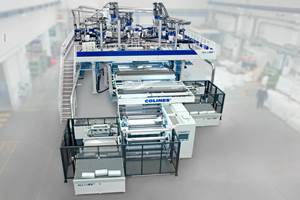Packaging Outlook: Moderate Growth in 2012
Our forecast for the U.S. market for plastics packaging in 2012 is positive, but the overall growth rate will be moderate by historical standards.
Our forecast for the U.S. market for plastics packaging in 2012 is positive, but the overall growth rate will be moderate by historical standards. This forecast is based on expectations for a slow recovery in the overall U.S. economy, with total GDP growth that starts out below its long-term potential and then gradually improves as the year progresses. We predict that real GDP will expand 2% to 3% next year, pushing the demand for packaging up by 3% to 5%.
The biggest markets for packaging are consumer non-durables, which include food, beverages, healthcare, household chemicals, and medical/pharmaceutical products. This category of expenditures is much less volatile than the consumer durables sector (autos, appliances, etc.), as many non-durables are necessities. Factors such as persistently high unemployment, slow income growth, and low consumer confidence in the coming quarters will constrain growth in spending for non-durables, but the overall growth will still be positive in 2012.
Growth in demand for plastics packaging has exceeded growth in spending for non-durables recently, and this trend will likely continue. Innovations in the design and manufacture of materials and products have resulted in lower production, shipping, and storage costs for many types of non-durables, and it has also created some totally new products.
Some other issues also confront plastics packaging processors. First is the price of resins. These follow the trend in crude oil prices, and once the global economy starts to recover, oil prices will most likey climb. High materials costs will be a problem for some processors in the short term.
A second problem facing this sector is the significant amount of unused capacity, which will make it hard to raise prices for packaging products even as demand and materials prices start to rise.
One final issue that is gaining momentum is concerns about perceived problems with health, the environment, and recycling/disposal of plastics packaging. Bag bans, plastics bottle de-selection, and conflicting stories about biodegradability and recyclability are having an effect on consumer demand for plastics products.
There are a couple of other long-term factors that will affect the packaging markets for years to come. The first is that the U.S. is the largest overall market for packaging products in terms of both total volume, per capita consumption, and more importantly, the annual number of launches of new packaging products, in which the U.S. leads by a wide margin. This last factor favors processors that are innovative, nimble, and always trying to solve problems.
The other long-term factor is the fast-growing packaging markets in developing nations like China, India, Russia, and Brazil. Because of the wide divergence in the types of climates, distribution, and access to refrigeration in these countries, many of the packaging products preferred by their burgeoning middle classes will be different from those used in the U.S.
WHAT THIS MEANS TO YOU
•Products that solve a problem, rather than merely make a profit, will be increasingly favored in the U.S.
•Prices for materials, food, chemicals, and energy paid by all manufacturers of packaging products and all consumers of non-durable goods will rise in the long-term.
•Issues concerning disposal, recycling, and re-use of packaging products and materials are still lurking. Once the economic recovery becomes better established, they will re-emerge.
Related Content
How to Optimize Injection Molding of PHA and PHA/PLA Blends
Here are processing guidelines aimed at both getting the PHA resin into the process without degrading it, and reducing residence time at melt temperatures.
Read MoreYoung Stretch-Film Processor Bets on Nanolayers
Going up against companies with as much as double its capacity, young stretch-film processor Zummit believes that new technology — notably 59-nanolayer films — will give it a competitive edge.
Read MoreUS Merchants Makes its Mark in Injection Molding
In less than a decade in injection molding, US Merchants has acquired hundreds of machines spread across facilities in California, Texas, Virginia and Arizona, with even more growth coming.
Read MoreFormulating LLDPE/LDPE Blends For Abuse–Resistant Blown Film
A new study shows how the type and amount of LDPE in blends with LLDPE affect the processing and strength/toughness properties of blown film. Data are shown for both LDPE-rich and LLDPE-rich blends.
Read MoreRead Next
Understanding Melting in Single-Screw Extruders
You can better visualize the melting process by “flipping” the observation point so that the barrel appears to be turning clockwise around a stationary screw.
Read MoreTroubleshooting Screw and Barrel Wear in Extrusion
Extruder screws and barrels will wear over time. If you are seeing a reduction in specific rate and higher discharge temperatures, wear is the likely culprit.
Read More


 (2).jpg;maxWidth=300;quality=90)

















